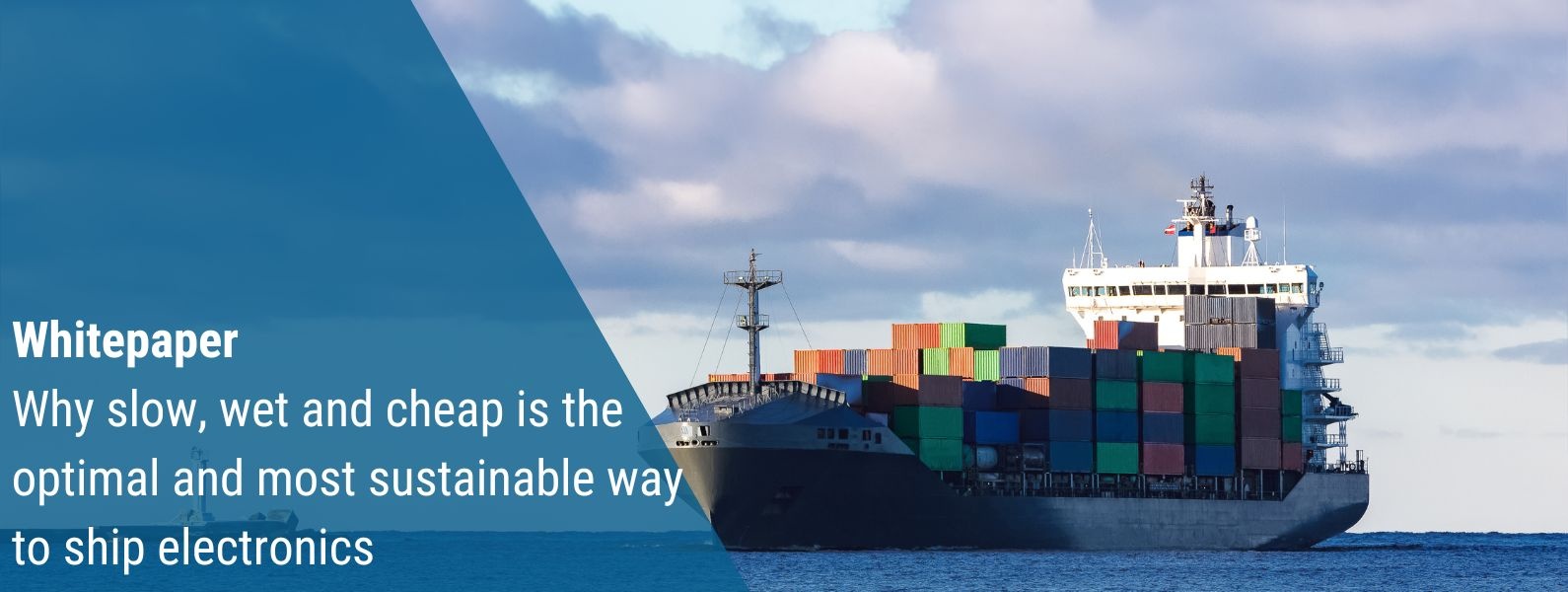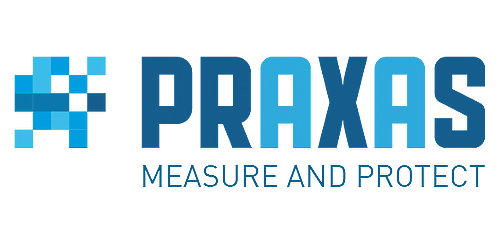Whitepaper: Why slow, wet and cheap is the optimal and most sustainable way to ship electronics
- Posted on
- By Praxas and Absortech
- Posted in Electronics industry, Humidity protection, Moisture control, Praxas Absorgel Hanging, Sustainable transportation
- 0

lectronics are both complex and fragile products. This fact plays a big part when companies in the electronics industry make decisions about the supply chain of everything from computer motherboards to the latest generation smartphones. The primary priority of the decision making is often to protect products from moisture damage during transport. This is where the logic goes out the window, as many companies in the electronics industry choose outdated, ineffective, or unsustainable solutions.
In this report, we’ll take you through two client cases that show that ocean freight can be sustainable, safe and cost-effective. They can be due to our innovative moisture protection solutions, that keep your sensitive products dry and safe even in the wettest conditions. We’ve had the pleasure of helping companies in the electronics industry change to a more sustainable and effective moisture damage protection solution and hope this report will convince you to do the same.
A little context before we get to it
Historically the complexity and type of electronic products have played a big part in determining the mode of transport. But the method of moisture damage prevention has also affected decision making. For electronics, these decisions are critical, as they’re so sensitive to moisture. Just a little excess moisture could result in irreparable damage or ruined packaging to huge costs. There can also be invisible damages that come to light only when the products are put to use. These are the typical damages in the industry:
Damaged packaging
Collapsed packaging
Peeling labels
Corrosion
In addition to this, the transport of electronic goods keeps increasing. During the last couple of decades the import and export of electronic goods stands at an 8% annual growth, while computers and consumer electronics grow by 9% yearly. This represents 829 billion(1) USD and 189 billion USD respectively in global imports.

We’ve found that the product characteristics and some general beliefs have been allowed to dictate the choice of moisture damage prevention solution of electronic goods transport. This has led to solutions that are environmentally questionable or inefficient, such as air freight or to use silica gel pouches during sea freight. Let’s take a closer look at these alternatives:
Shipping by air: the unsustainable method
Products with a high value to weight or volume ratio are usually shipped by air. These are goods with a high capacity to bear the costs of air transport, such as semiconductors and other lightweight high-value electronics such as mobile phones. Shipping by air is also the mostcommon solution when just-in-time material management and inventory minimization is prioritized.
According to the EESI, the Environmental and Energy Study Institute, aviation(2) produced 2,4 percent of total CO₂ emissions in 2018. If aviation were a country, it would rank number six in the world between Japan and Germany in terms of CO₂ emissions. The percentage is expected to triple by 2050, given the projected growth of air travel and freight.
Air freight generates 47 times as much greenhouse gas emissions as ocean freight. Therefore, shipping by air is an unsustainable way to transport goods. An electronic manufacturing company should replace air shipments with ocean freight to reduce carbon emissions and improve sustainability levels.
Shipping by sea with the use of silica gel pouches: the inefficient method
Consumer electronics such as computers and printers that have a relatively low value compared to the product volume, together with longer product obsolescence cycles, are most likely shipped by sea.
For ocean freight, those electronics are often protected from corrosion with silica gel pouches. Silica gel, as we explain in our Insight “Benefits of exchanging silica gel for AbsorGel”, has less absorption capacity than other desiccant solutions. This fact makes it necessary to place larger quantities of silica gel desiccants in the container to obtain the right level of protection, which means more plastics and resources are needed.
The environmental impact of your decisions matter
To maintain activities and solutions with a high environmental impact, while the world is urging to produce, transport and live in a more sustainable way, isn’t everyone’s cup of tea. And some supply chain, export and sustainability experts from electronic companies are on the hunt for alternative moisture damage prevention methods. They’re looking for solutions that can help their companies reduce the environmental impact of their supply chain activities, in addition to avoiding moisture damages and saving on logistic costs.
Those companies share a couple of common concerns in their search for sustainable alternatives:
The alternative solutions are ineffective and excess moisture can damage expensive products.
Alternative products such as calcium chloride desiccants could risk damaging the products as liquids containing salt would cause corrosion.
The second concern is a general belief unfortunately widespread in the sector. Absortech has proven that AbsorGel is an efficient and trusted solution to prevent moisture damages during sea transport of electronic and telecom products and appliances. It’s not a matter of belief but a matter of fact.
References
- Trade in electronic components drives growth in technology goods, UNCTAD, published 11 March 2019., Available here: https://unctad.org/news/trade-electronic-componentsdrives- growth-technology-goods
- https://www.eesi.org/papers/view/fact-sheet-the-growth-in-greenhouse-gas-emissions-from-commercial-aviation
Download PDF here


Comments
Be the first to comment...